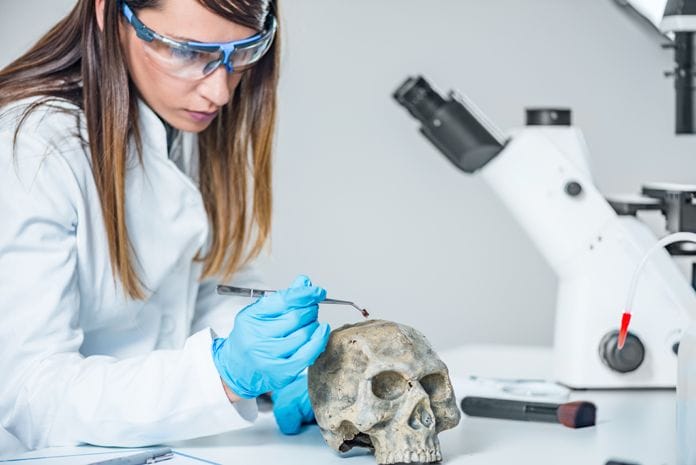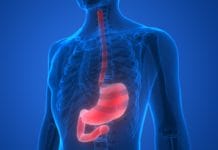A big part of mainstream media is criminal investigations and law enforcement dramas. Most of the time, these involve missing persons or murder investigations. As a dental hygienist, this brought about some interest in determining if it was possible to identify a person from a single tooth.
There are several different manners of using teeth to identify a person; the DNA from the pulp chamber can be extracted and used to crossmatch and identify a victim. Another option is simple dental records. For example, if it is known a person is missing their first premolars, has a MOD amalgam on tooth #30, has a MO composite on tooth #14, and PFM crown on #2, a match can be made. By matching these dental records to a corpse, the person can be identified even if their skin and many other parts of their remains are unidentifiable. People can also be identified by their bite mark, which is the pattern their teeth make when they come together or occlude. Criminals have been identified from the bite mark they may have left on a victim.
One of the more recent developments of person identification using teeth is called ameloglyphics, or enamel rod patterns. As we remember back to our dental anatomy course, teeth are one of the hardest structures in our body. Specifically, the enamel and dentin are the most resilient aspects of a tooth and may not decompose. Enamel rod patterns, similar to fingerprints, are unique to each individual. However, unlike fingerprints, teeth and their enamel rod patterns are more resistant to destruction; they cannot be burned or cut to change their pattern. Once a tooth has formed and erupted the identifying factors, the enamel rod patterns, are unchangeable. Enamel rods form in a pattern somewhat similar to fingerprints. In the lower part of the tooth they are mainly horizontal, near the cusp of the tooth the enamel rods begin to slant away from the body of the tooth.
To obtain an enamel rod “print,” the tooth must be acid-etched first. This makes the overall tooth more even and smooth. Simple impression materials, such as rubber-based material, can be used as can cellulose acetate paper. The record of this print must then be stored in a clean, safe, and dry location. Eventually, it may be possible to simply scan the tooth print and make a record available which can then be evaluated using biometrics. Analyzing software is still in the invention and evaluation stage to determine if it can accurately identify a person from their biometric tooth print.
Another method in which tooth prints could be used are areas of work in which the employees are at high risk for accidents or injury. Some examples may be military personnel, police, search and rescue teams, and EMT’s. In these areas of work, it may be a consideration to obtain and record their tooth print in case of disaster. If it becomes a norm to use tooth prints to identify a person, and they are used as part a person’s permanent record, they may need to be updated every few years in case the tooth has become worn due to occlusion.
Another way of using teeth to identify people is using amelogenin gene. This gene can be extracted from the pulp of a tooth and analyzed using a polymerase chain reaction to determine the gender of the victim. Blood has been accurately used to evaluate gender in living victims, but teeth and bones are accurate DNA access for deceased. A study in India was performed on 50 teeth which had been unviable for a period of 1-3 months. The gender of the tooth’s owner was accurately identified in all 50 cases. The teeth were also subjected to a high level of heat. Molars and premolars were the preferred teeth for this method due to a larger pulp. Additionally, the apical portion of these teeth was preferred and found to be most reliable. In cases where teeth are unavailable due to decay, premature loss, or larger restorations, the mandibular bone has been an excellent source for DNA analysis. The mandible is an easily accessible and removable bone that can be used to identify a person’s age and gender, as well.
A technique that has become more popular in the past five years has been radiographic tooth and jaw identification. Radiographs taken after death can be compared to radiographs taken while they were alive. Victims have been identified in 42% of these cases with this method. Although in cases of radiographic comparison, the chest is most identifiable, the skull is second most accurately identified by 20% of cases. There are 11 points of comparison to identify victims from dental radiographs including missing/impacted or retained primary teeth, “hidden restorations” such as implants, bone patterns, and anatomical landmarks. Because dental restorations can leave artifacts on radiographs, occasionally this does not serve as a reliable identification tool.
It has also been found when a body is badly decomposed, ultraviolet lights can be helpful to differentiate between virgin tooth structure and restorations. Sex of a person can be determined by size and shape of mandibular ramus and mastoid process. Lastly, the age of a victim can be identified from eruption status of teeth. This is in fact, more accurate than age determined from the skeleton. Because all primary and some permanent teeth are developed before birth, they are not subject to environmental and nutritional factors and therefore can be assessed more accurately.
To answer my question posed in the beginning if it was possible to identify a person from a single tooth, with emerging technologies, it looks like the answer is yes!
Before you leave, check out the Today’s RDH self-study CE courses. All courses are peer-reviewed and non-sponsored to focus solely on pure education. Click here now.
SEE ALSO: Considerations for the Management of Geriatric Patients
DON’T MISS: Finding Compassion with the Most Difficult Patients
Listen to the Today’s RDH Dental Hygiene Podcast Below:
References
- Sha SK1, Rao BV2, Rao MS3, Kumari KVH4, Chinna SK5, Sahu D6.” Are Tooth Prints a Hard Tissue Equivalence of Finger Print in Mass Disaster: A Rationalized Review.” Pharm Bioallied Sci. 2017 Nov;9(Suppl 1):S29-S33.
- Dutta P1, Bhosale S1, Singh R2, Gubrellay P3, Patil J4, Sehdev B5, Bhagat S6, Bansal T7. “Amelogenin Gene – The Pioneer in Gender Determination from Forensic Dental Samples.” J Clin Diagn Res. 2017 Feb;11(2):ZC56-ZC59.
- Singh S1, Bavle RM2, Konda P2, Venugopal R2, Bopaiah S3, Kumar S3. “Assessment of the most reliable sites in mandibular bone for the best deoxyribonucleic acid yield for expeditive human identification in forensics.” J Oral Maxillofac Pathol. 2017 Sep-Dec;21(3):447-453.
- Corte-Real A1, Anjos MJ, Vieira DM, Gamero JJ. “The tooth for molecular analysis and identification : a forensic approach.” J Forensic Odontostomatol.2012 Jul 1;30(1):22-8.
- Dedouit F1, Savall F, Mokrane FZ, Rousseau H, Crubézy E, Rougé D, Telmon N. “Virtual anthropology and forensic identification using multidetector CT”. J Radiol.2014 Apr;87(1036):20130468.
- Agrawal NK1, Dahal S1, Wasti H2, Soon A3.”Application of Ultraviolet Light in Dental Identification of Avalanche Victims.” J Nepal Health Res Counc.2017 Sep 8;15(2):193-196.











